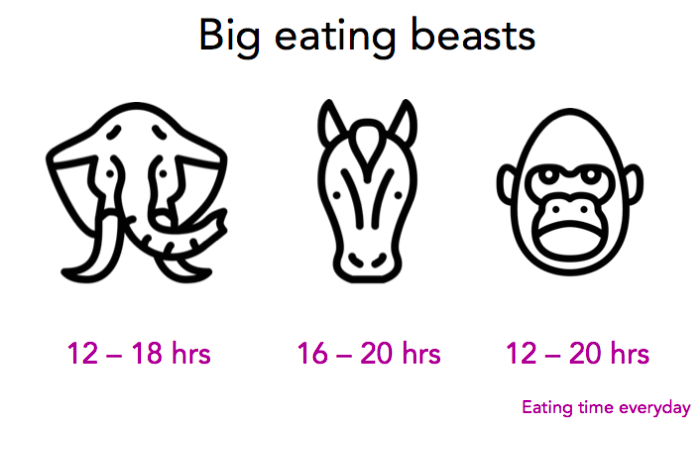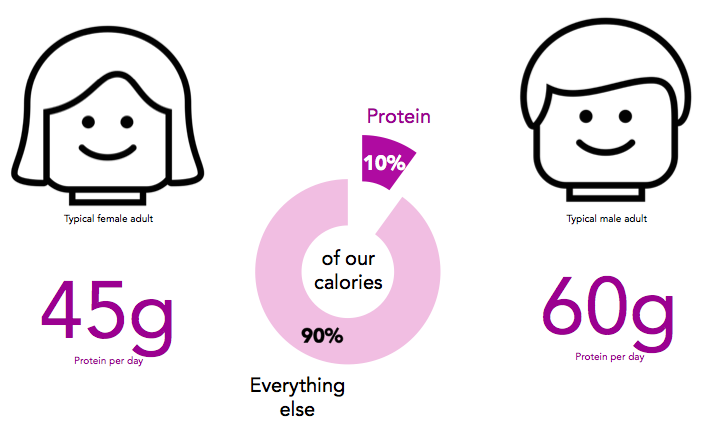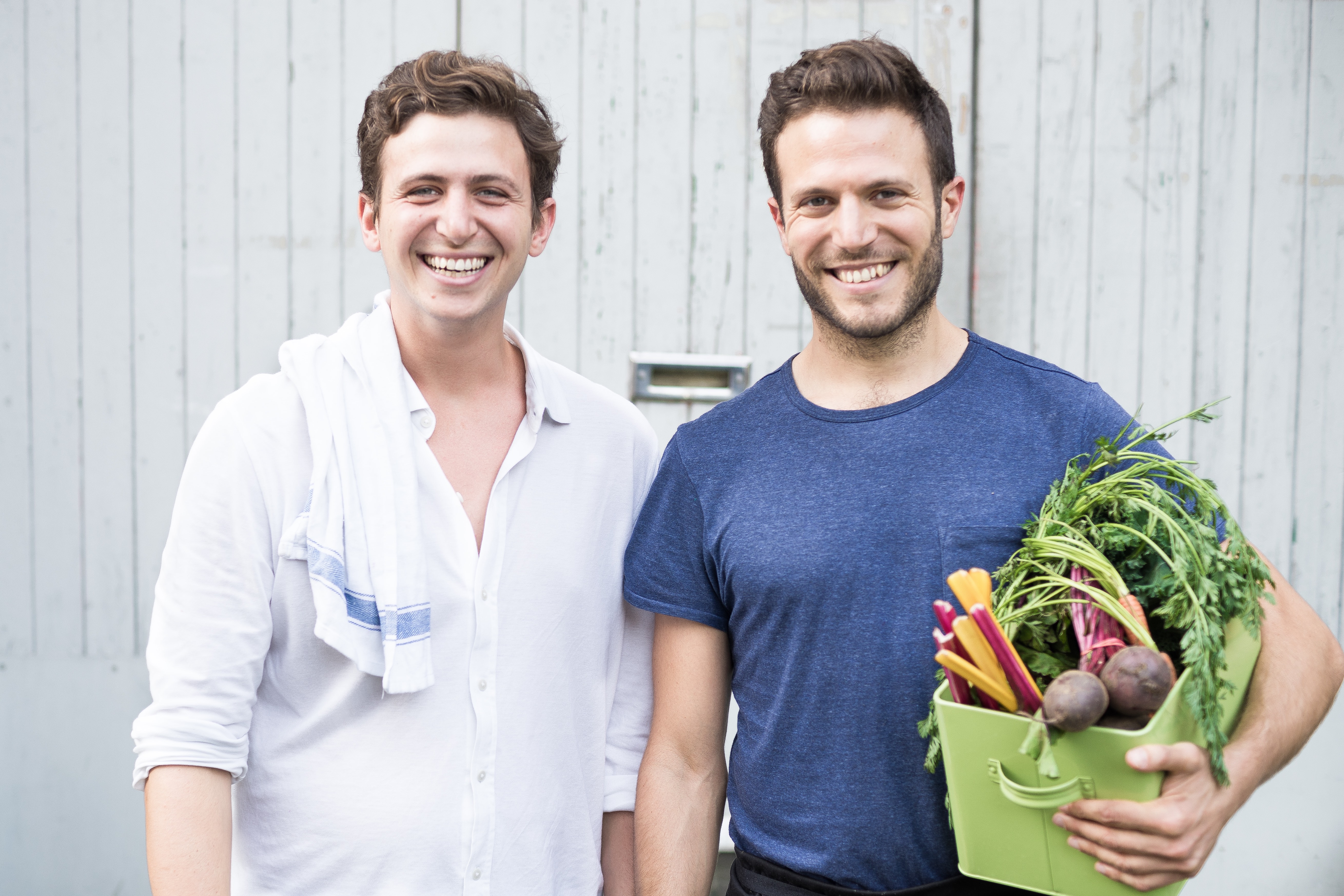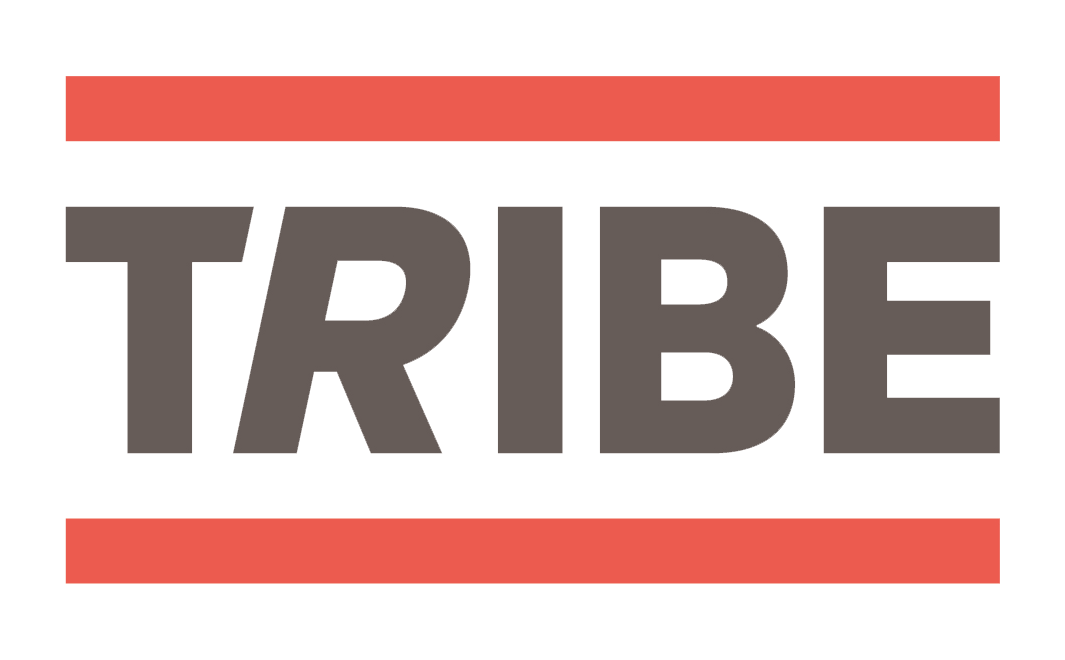In 2015 I started experimenting with a plant-based diet, and was whacked in the face with that typical first question — but how will I stay fit, strong and active on nothing but plants? Where will I get my protein?
To answer this question I went on a mission, geeked out, trawled through every expert and scientific paper I could, and now want to help break this myth by sharing the simple facts.
Before I begin — and so that I’m not misleading anyone — I should tell you that I’m neither a doctor nor a nutritionist. However, thanks to my work, I’ve had the chance to chat with lots of dietary and nutrition professionals about this question.
Beasts and champs
As soon as you truly open your eyes it’s obvious — the biggest, strongest creatures, such as gorillas and elephants, get all they need from leaves and grass and manage to grow way more muscle tissue than humans ever need, surviving and flourishing in all their fierce splendour.

Now, I don’t fancy spending all day eating grass clippings and tree roots like these grazers, and maybe you feel the same — if not for taste, then certainly for time. These big eaters are putting in a minimum 12 hours shift eating, everyday… after sleeping too that doesn’t leave much time for the rest of our day. So we need more calories (and yes, more protein) in less time.
Fortunately human ingenuity helped us to evolve from grazing a long time ago. Fire meant we were suddenly able to cook and create foods with higher concentrations of calories, including meat. We could eat these foods in shorter feeding sessions and were no longer foraging for the next tree to chew, freeing up time to explore, learn and create.
Well, we don’t want to wind back evolution, quite the opposite. Fear not, a quick look at the growing ranks of plant-powered champions like Serena Williams and Barny DuPlessis, shows that today there must be plenty of plant-based protein and nutrient rich foods available to us — perhaps this is a new step of human progress beyond the need to eat animals?

What the scientists say
Since discovering it almost 200 years ago, science has uncovered that proteins are in every living thing, in fact they’re in every cell of every living thing, and so we — and all plants — are full of proteins.
Proteins are huge molecules made up of smaller molecules called amino acids. It’s actually these amino acids, life’s building blocks, that all living things require for everyday growth and repair. Our bodies actually produce 11 of the 20 amino acids we require on their own. This leaves 9, often referred to as the “essential” amino acids, that get into our bodies through through food and drink.
Let’s look at how this works, starting with where these “essential” amino acids come from: plants themselves. [Look-out for the geeky lego analogy to help]

Plants are clever enough to make all of their amino acids from scratch. Their key input for this is the nitrates absorbed from the soil through their roots. [Imagine a kid pours out her lego box to start building]

Plants then string these amino building blocks together into very particular formulations to build new cells, fuelling the growth of leaves, stems, flowers or fruits. [She and her friends build their favourite lego castles and houses]

We animals then come along and eat these plants. Digesting the goodness, we take the plant proteins and break these chains apart, back into the individual amino acids again. [Then her older brothers come along and smash their castles into all the little bricks again]

At this point we have a pile of amino building blocks, ready to build with. And using our DNA as an instruction manual, each cell grabs whichever amino acids it needs to start stringing together in a special order, and crack-on with making new hormones, blood plasma, antibodies, skin or of course, muscle tissue. [And the bigger kiddies now get busy building that lego pirate ship or space station they’ve always wanted with those pieces]
When we animals choose to eat other animals, this adds a critical extra step: industrially farming animals to eat and pre-synthesise the plants’ protein for you. So what is the difference between animal and plant protein? Which is better? Well:
-
Packaging. A key difference is how the protein is packaged; meat comes with saturated fats, cholesterol, antibiotics, hormones — not to mention its major contribution to environmental degradation and violent practices — whilst plants come with free extras such as antioxidants, fibre, minerals, vitamins and phytochemicals.
-
Efficiency. Why feed all those lovely plants to industry-farmed animals, instead of eating the delicious goodness directly. Nobody likes a middle-man, and we certainly could do with wasting less energy, land, water and emitting less greenhouse gases.
-
Absorption. One concern levelled at plant protein is that it is sometimes not absorbed as readily by our body. It’s widely accepted that this is sometimes the case , but all it means is that we AllPlants champs just need to eat a few more grams of protein — we’re talking an extra handful of peanuts per day, so no biggie there.
-
Completeness. Another concern is that plants are “incomplete” proteins. This is simply not true, every plant contains all 9 of the essential amino acids, it’s just that some are slightly under-indexed in 1 or 2 of them — [kind of like the kiddies not having enough red lego, just loads of blue ones]. So aside from those plants which are ‘complete’ protein sources such as quinoa, tofu or edamame, the rest of the time it’s all about eating as varied a diet as possible — particularly including delicious combinations of legumes and grains —[to ensure a lego bucket brimming with plenty of every brick, colour and shape]. These combinations can be as simple as peanut butter (legume) on toast (grain), houmous (legume) and pitta (grain) or black beans and rice — all delivering a complete set of amino acids in one hit.
Do I just eat loads of lentils?
Contrary to common misconception, only 10% of our daily intake needs to come from protein — and yet we spend all this time fretting about it. Most importantly, eating more protein serves no additional benefit (as emphasised here and here), in the words of an international ultra-marathon champion:
no scientific study has ever shown that consumption of protein beyond the RDA stimulates additional muscle growth or expedites physiological repair induced by exercise stress” Rich Roll slaying it.

Taking a look at what I eat, I found some unexpected and welcome surprises. For example, did you know that the USDA Food Composition database highlights hundreds of plants as ‘High Protein’, because 20% or more of the calories come from protein (an accepted measure for all foods). It’s 30% for courgettes, 45% for Portabella mushrooms, and 50–66% for Asparagus! They’re low in calories, so to reach my 60g RDA of protein, I’d have to eat 2kgs of Asparagus, which might get a bit tedious. But, it’s a helpful reminder that if you’re eating a tasty mix of grains, legumes, greens and veg it would be hard NOT to find a healthy and hefty hit of protein on every plate.
To put this to the test, I spent a couple of days carefully logging everything I ate, so that we could see how many grams of protein I’m unknowingly eating.
Monday’s have to start with a hearty porridge, and are often closely followed by a black coffee — the thing that surprised me when logging this, was that my americano even contributed 1g of protein — it’s in everything, not just lentils! I was genuinely surprised when totting up this day to find I’d overshot by ~30% my RDA of protein (and I’ve not even included other drinks during the day or desert).
Tuesday morning was slightly rushed, but I had 5 minutes to rustle-up a smoothie of fruit and veg (banana, spinach, tangerine, blueberries) with a spoon of cashew butter — adding a Pea/Hemp powder or Chia/Flax seeds would have amped this up by another 15g protein apparently. After that both lunch and dinner were just baked sweet potatoes with a leftover bean chilli and a simple greens and tofu stir-fry. Maybe because I was more conscious having overdone it on Monday, I managed to come in a bit closer, but still over by 10%.
In my experience it’s all about taking it easy on yourself and enjoying variety without needing to track protein intake anymore than you would on any other diet. I’ve never counted calories or nutrients in my life and, whilst going AllPlants has made me more thoughtful about eating a good balance of tasty things, that is it. All about balance.
So it turns out we can all eat nutritious, and damn delicious, food, feel great and live in line with the burgeoning evidence that shows neither our bodies, nor our planet, can keep pace with the current consumption of meat, dairy and eggs. Those eating AllPlants enjoy thriving lifestyles with delicious food, good for people and planet — go on, give it a go.
Thanks for reading ✌️. If you want more on this, here’s a talk on Plant Protein I gave at Just V Show recently, and if you fancy delicious plant-based food delivered to your doorstep, do join our AllPlants taster list for a chance to join our supper clubs this summer.
Sources:
- Vegan RD has helpful no-nonsense advice from a plant-based dietician.
- Patrick Baboumian, Germany’s strongest man, has a great video series — Where Do You Get Your Protein? — with simple tips on what to eat.
- PETA always help with tips on how to enjoy a healthy vegan lifestyle
- Veganuary’s legumes/grains combo dishes are particularly helpful too

